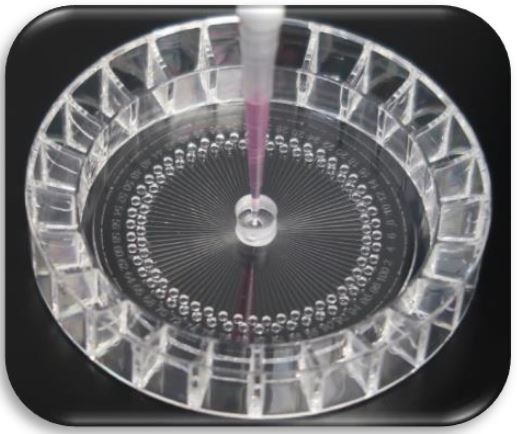Mitochondria and their functional status provide an early indication of cellular toxicity and thus have emerged as a critical target in drug discovery and toxicity profiling. Apoptosis, necrosis and slow degenerative disease all exhibit changes in the electrochemical gradient across the mitochondrial membranes, ΔΨm, which give rise to the creation of the electronic potential necessary for ATP production.
 JC-1, a universally recognized marker…
JC-1, a universally recognized marker…
Introduced in 1991 the live cell carbocyanine dye JC-1 indicates this change in ΔΨm by reversibly changing its emission from green in non-polar mitochondria to orange/red in hyperpolarized mitochondria. The red signal is a result of the aggregation of green emitting JC-1 monomers into orange/red emitting aggregates–so called J-aggregates. Useful in nearly all cell types tested, it remains one of the most reliable markers of mitochondrial health in live cells.
…whose use can be optimized
Dyrect JC-1 Mito Health Assay Kit provides instructions that allow for flexibility in the in situ delivery of the fluorescent reagent with minimal perturbations to the cell where disruption of the native conditions could alter results. Or where a media change would disrupt sensitive drug dosing formulations. This is accomplished by using an alternative protocol that allows adding the reagent at 2X concentration directly in situ to cells in complete media. While some background will be evident, the signal to noise is sufficient for most analyses. Alternatively, the Opti-Klear™ Live Cell Imaging Buffer (described in a previous article on this blog) provided will reduce the background and can maintain your cells in the absence of C02 for at least 1-4 hours. This buffer is ideal for maintaining culture media pH outside of CO2 incubators for cells normally grown in bicarbonate buffered media formulations. This kit provides convenient single use vials, with enough materials to perform 50 assays based on labeling volumes of 100 µL for 96 well plates –adjust accordingly for your particular plate or vial format.
Reduction in red J-aggregate formation in HeLa cells with increasing concentrations of the protonophore carbonylcyanide-p-trifluoromethoxyphenylhydrazone (FCCP) an uncoupler of mitochondrial oxidative phosphorylation. HeLa cells in complete media were treated with FCCP for 30 minutes, then JC-1 added for 30 minutes and imaged with a 40 X, 1.3NA oil immersion objective using a standard FITC/TRITC filter sets.




